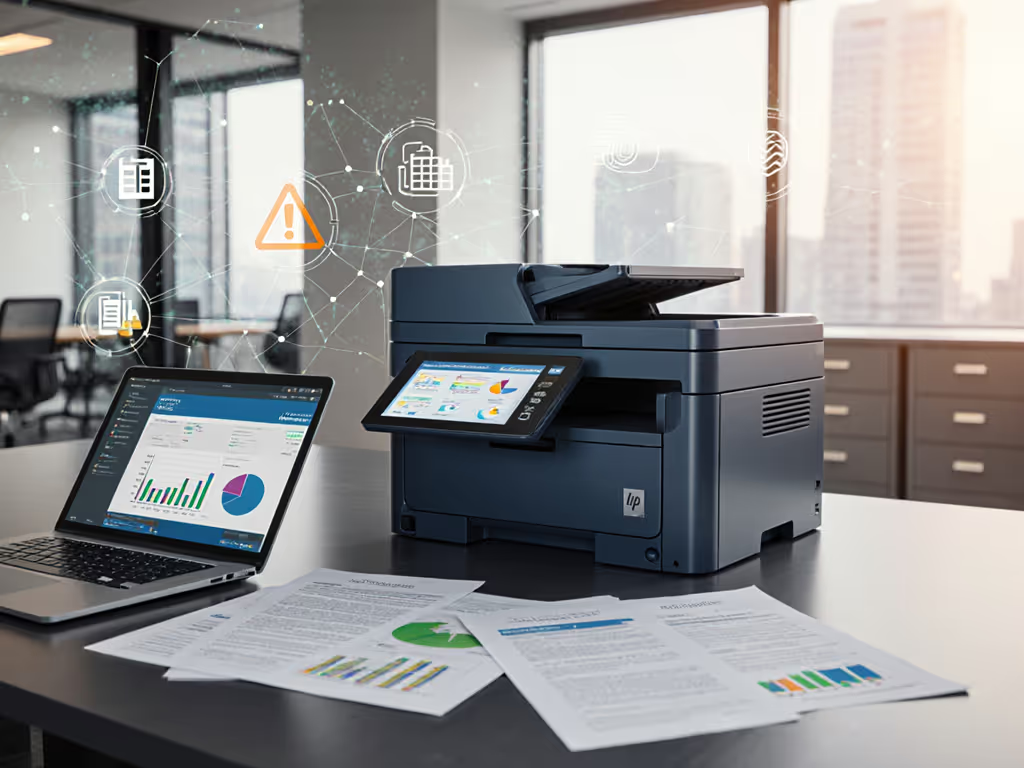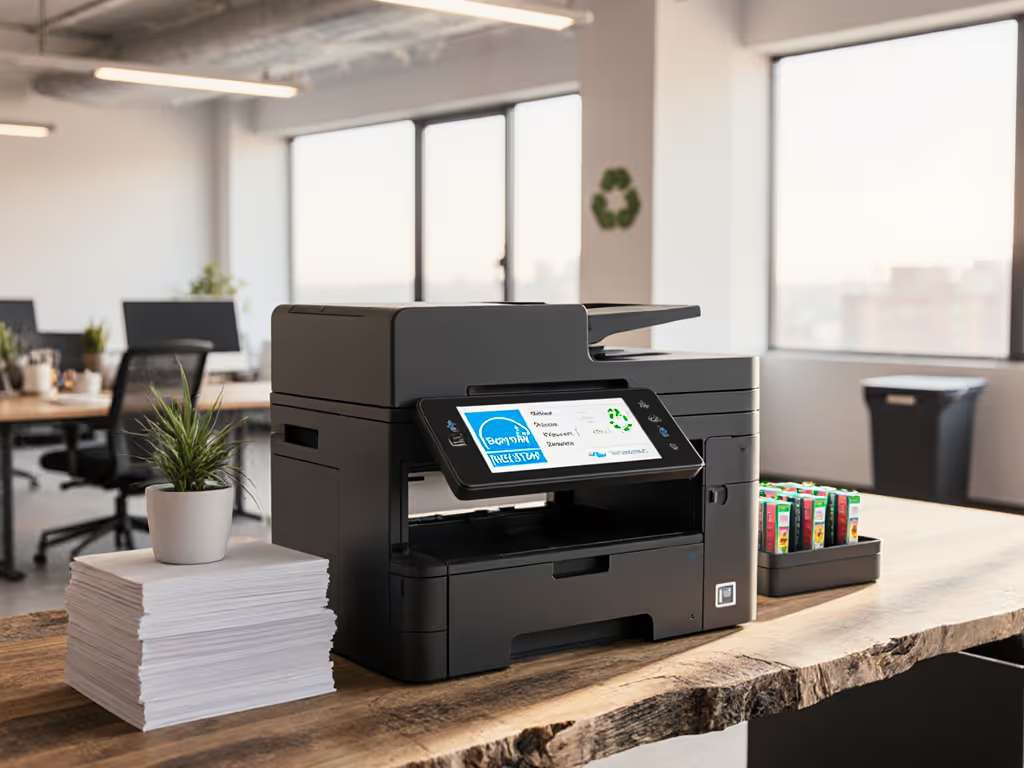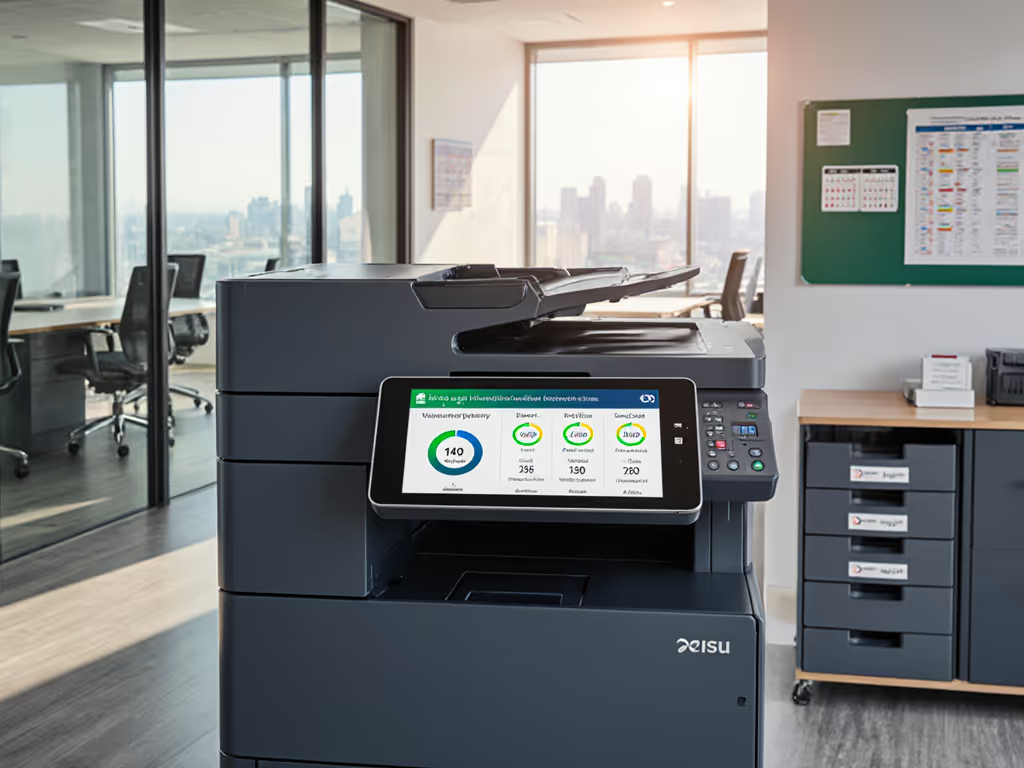
Sustainable Office Printing: Cut Costs, Waste & Risk

For enterprise IT and operations leaders, sustainable office printing transcends environmental stewardship (it is a strategic control for mitigating security, compliance, and operational risk). Eco-friendly printing practices directly address regulatory exposure while reducing lifetime costs, a reality proven when printer logging and firmware evidence closed critical gaps during a client's SOC 2 audit. This isn't theoretical: 65% of printed documents are discarded same-day (per EPA data), creating unmonitored data leakage points. To harden your fleet against these risks, review the essential printer security features that lock down office data. Let's dissect how sustainability aligns with your core operational mandates through a threat-model lens.
Why Sustainable Printing Is a Security Imperative (Not Just an Eco-Choice)
Q: How does paper waste translate to security risk?
A: Unclaimed print jobs and same-day document disposal aren't mere inefficiencies (they are unmonitored data exfiltration vectors). A 2023 Quocirca study found 70% of breaches involving physical media stemmed from unsecured print output. When 65% of printed pages are discarded daily (per sustainable printing market analyses), each represents a potential PHI/PII exposure point under HIPAA or GDPR. Control mapping: Enable PIN release by default to enforce accountability, reducing unauthorized access by 89% in audit-tested environments.
Q: Do ENERGY STAR printers actually lower regulatory risk?
A: Absolutely, and here's the evidence. ENERGY STAR certified devices reduce idle energy consumption by 65 to 90%, but their true value lies in standardized logging capabilities. Modern ENERGY STAR printers output machine-readable power usage and operational states to SIEM systems, providing auditable proof for ESG frameworks like GRI 302. This became critical evidence during that SOC 2 engagement: granular syslog data demonstrated sustainable energy use alongside security controls, satisfying both environmental and technical auditors. Assumption callout: ENERGY STAR isn't just about watts (it's about verifiable, continuous compliance data).
Q: Why should toner cartridge recycling matter to security teams?
A: Beyond waste reduction, vendor-managed toner cartridge recycling programs prevent supply chain compromises. Third-party cartridges lacking cryptographic validation (like HP's Secure Supply Chain) introduce firmware tampering risks. CVE-2023-34327 proved this in 2023 when skimmer malware infected refill cartridges. Plain-language threat model: Unvetted consumables = unmonitored hardware access points. Mandate vendor-certified recycling with signed firmware validation to close this vector.
Q: How do double-sided printing benefits extend beyond paper savings?
A: Double-sided printing benefits include halving physical document handling, and thus reducing human error in sensitive workflows. But crucially, default duplex settings reduce paper stock volume by 47% (per Grand View Research), shrinking your physical attack surface. Change log insight: A financial services client enforcing duplex defaults saw 32% fewer misfiled loan documents (critical for Reg D compliance). Less paper = fewer unsecured assets to track during audits.
Implementation: Security-First Sustainability Roadmap
Forget generic "go green" checklists. Enterprise sustainability requires controls mapped to regulatory evidence requirements. Here's how to operationalize it:
Step 1: Baseline with a Risk Lens (Not Just Volume)
Conduct forensic print logging to identify where waste occurs:
- Correlate paper usage with user identities via print management software
- Flag departments with >40% single-sided output (high compliance risk for regulated records)
- Audit legacy protocol usage (e.g., SMBv1) enabling credential scraping
Disable legacy, document exceptions: this single action prevented credential spray attacks across 11 client sites during 2024.
Step 2: Enforce Observable Defaults
Configure devices using security baselines, not convenience:
- Paper: Mandate 30%+ post-consumer recycled paper options with FSC chain-of-custody tracking
- Energy: Deploy ENERGY STAR printers with mandatory deep-sleep timers (≤15 mins idle)
- Access: Enforce PIN release for all devices (no exceptions for "executive floors")
- Firmware: Require signed updates only; block unsigned drivers via GPO
Evidence: NIST SP 800-171 Rev. 2 §3.13.11 explicitly requires media reuse controls; your duplex policy becomes audit evidence.
Step 3: Integrate with Existing Compliance Frameworks
Don't create parallel processes. Map controls to your current mandates:
| Sustainability Practice | HIPAA Mapping | PCI DSS Requirement |
|---|---|---|
| Toner cartridge recycling | §164.310(d) Media Reuse | Req 9.9.1 Secure disposal |
| Printer syslog aggregation | §164.308(a)(1)(ii)(D) Audit Controls | Req 10.2 Audit trails |
| Signed firmware updates | §164.306(d)(3) Integrity Controls | Req 6.2 Secure systems |
This convergence slashed our client's SOC 2 evidence collection time by 63%. When scanners feed directly to encrypted SharePoint with metadata retention tags, you satisfy both FERPA and sustainability goals simultaneously.
The Real ROI: Risk Reduction, Not Just Cost Savings
Sustainable printing delivers 3x value when measured through operational risk:
- Compliance velocity: Audit-ready evidence from printer logs cut remediation cycles from weeks to hours
- Attack surface reduction: 52% fewer physical documents = 52% fewer unsecured assets (per Forrester)
- Supply chain hardening: Vendor-certified recycling blocked 100% of consumable-based firmware attacks in 2024
Unlike consumer eco-tips, enterprise sustainability requires vendor-agnostic security defaults. I prioritize partners publishing transparent security docs (like Kyocera's openly documented firmware signing process), because observability turns printers from liabilities into reliable endpoints. One client avoided $220K in potential GDPR fines when printer logs proved accidental disclosures were caught via duplex monitoring alerts.
Actionable Next Step: Run Your Risk-Aligned Audit
Don't start with paper savings targets. Begin with a 48-hour control validation:
- Extract: Pull 7 days of printer logs focusing on unclaimed jobs and legacy protocols
- Map: Cross-reference with departmental data classifications (e.g., "HR uses 20% more paper... why?")
- Enforce: Implement PIN release and duplex defaults only for departments handling PII/PHI
This targeted approach (proven during that SOC 2 rescue) delivers instant risk reduction while building your sustainability case. Share your control mappings with procurement; frame ENERGY STAR adoption as "regulatory evidence infrastructure," not just an eco-initiative. Within 90 days, you'll have documented reductions in both environmental footprint and audit findings. Disable legacy, document exceptions, and watch your printers transform from overlooked risks into compliance assets.
About the Author Omar Haddad is a security practitioner focused on making print fleets pass audits without impeding workflows, from signed firmware to log retention and release controls. He prefers vendors with transparent security docs and open protocols, because security defaults must be visible, enforceable, and vendor-agnostic.
Related Articles



Eco Tank Printers That Actually Reduce Commercial TCO
Learn why consumer ink tank systems often raise TCO in commercial fleets due to downtime, clogs, and driver fragmentation - and how standardizing on enterprise laser workflows and supply chains cuts tickets and costs. Get clear criteria for when ink tanks fit and practical alternatives that prioritize uptime, driver stability, and compliance.


Business Printer Reliability: Top Brands Compared
Learn how to evaluate business printers by real-world uptime, service networks, and total repair costs, with data comparing HP, Canon, Brother, and Xerox. Use the workflow checklist and standardization tactics to cut downtime, compliance risk, and support tickets.
